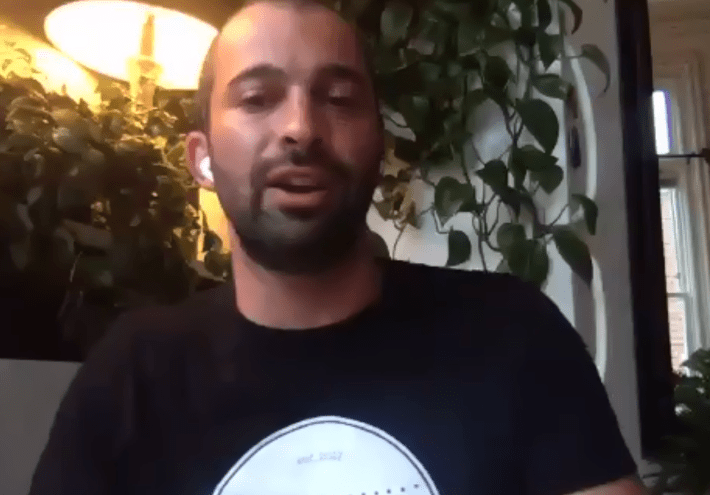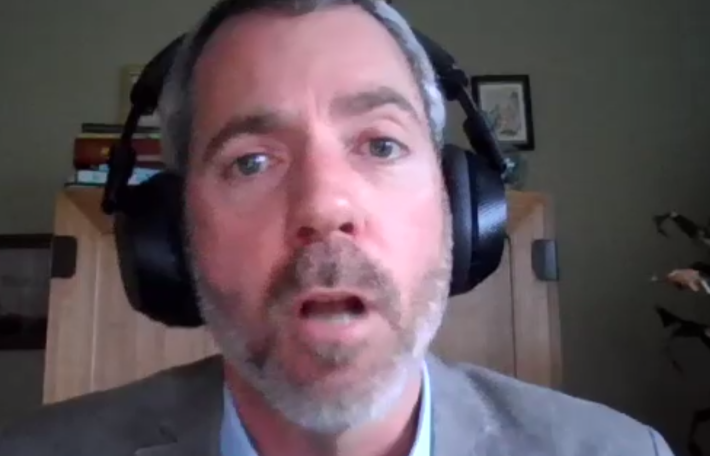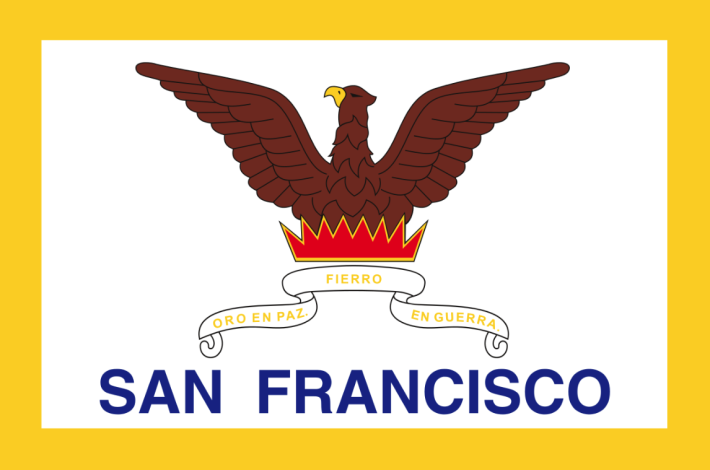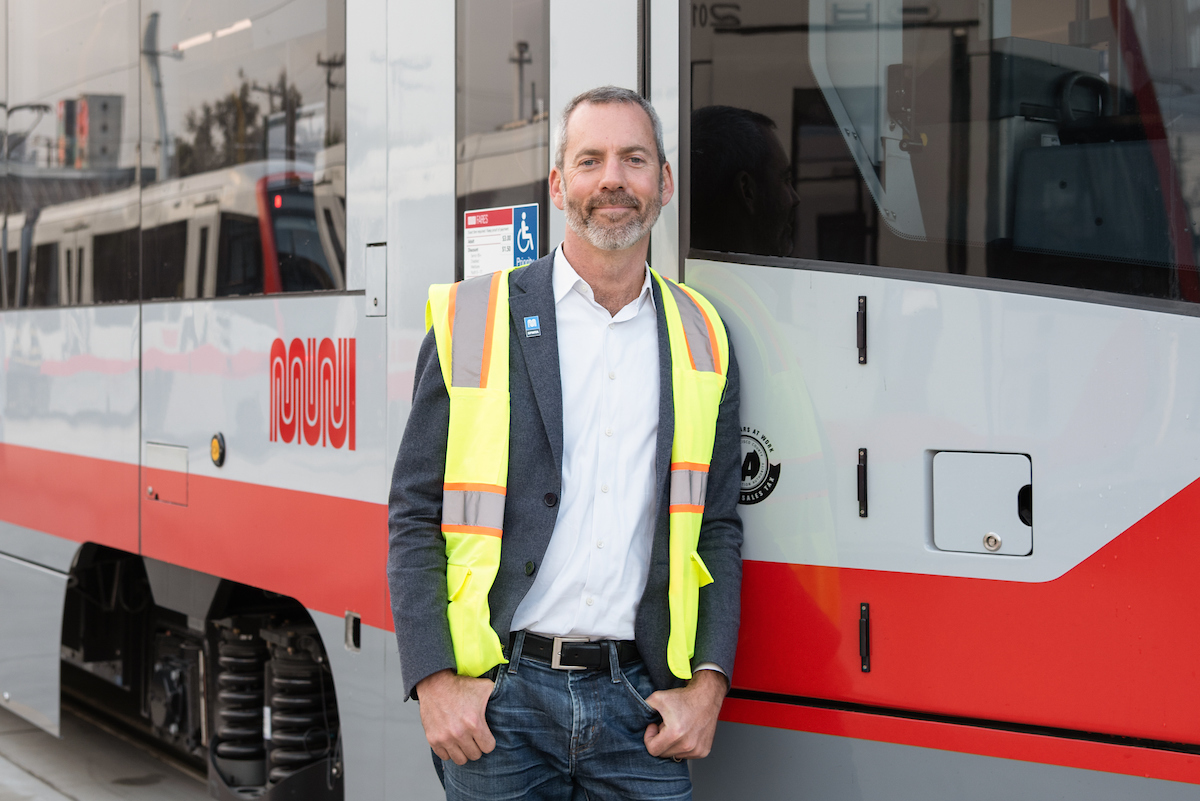It was only a couple of months ago that SFMTA Director Jeffrey Tumlin sat down with Manny Yekutiel of Manny's in the Mission, San Francisco's Valencia Street events space, to discuss protected bike lanes and improved bus service. But, as Tumlin expressed during a second Q&A with Manny, held virtually yesterday/Wednesday evening, that may as well have been 100 years ago. With the COVID-19 lockdown now in its fourth week, everything has changed. Muni has suspended train service. It has eliminated all but 17 of its 83 bus routes. And it is no longer enforcing most parking regulations, to make it easier for people to shelter in place. The agency is also hemorrhaging money as ridership plummets and more and more operators call in sick.
Streetsblog wrote up this (edited) Q&A based on yesterday evening's conversation.
***
Manny: Are you saving money by cutting bus lines?
Tumlin: No, we didn’t save any money by cutting lines. We pay our workforce a living wage. And we cannot save money except by laying off our workforce. That's the last thing I’m going to do. We’re going to lose about $200 million this quarter. And our biggest source of revenue is parking fees and fines, which have dropped by over 95 percent.
Manny: I know that $200 million is a lot, but it’s nice not to have parking fines. Was that a hard decision to make?
Tumlin. Our initial approach was focusing on maintaining citations that are about health, safety or access. We are concerned about health and street cleaning, not necessarily because of COVID, but literally because of crap.
Manny: With parking fines suspended, are streets getting cleaned?
Tumlin: Yes, but street cleaners can’t get to the curb. So please move your car if you can, but you’re not going to get a ticket.
Manny: I did move my car.
Tumlin: Thanks. Most essential workers, machinist, mechanics, cleaners, are in the field supporting line supervisors. We shut down our stations, and all SFMTA employees are considered disaster relief workers, so we're putting people into service doing extra cleaning. We have clerks and engineers working full tilt, assisting storekeepers getting masks and sanitizer out to our workforce. I try to spend at least three days a week out in the field talking to our front-line workforce to see how they’re doing. Also, our Owl Bus operators are still staying up all night long and they are concerned about how buses have become a place of refuge for those with no place else to go. But they are still out there moving essential workers, such as hospital housekeeping staff that get off at 2 am. Our parking control officers are also doing disaster control.
Manny: That’s the hardest job ever.
Tumlin: Everybody hates to get a ticket, but everyone wants them working in their neighborhood maintaining order--so they’re in this impossible position of having to maintain order, while not being too heavy-handed, which in San Francisco is impossible. It’s a complete contradiction and they navigate that place really really well. They're in uniforms, but they’re not police.
Manny: So they keep you on edge, but not so on edge.
Tumlin: They're helping folks.
Manny: The news I’m getting is the re-opening is going to happen soonish, but what if it doesn't? How long can you last?
Tumlin: This whole COVID adventure has been about scenario planning and resiliency. We don’t know when we'll reopen. And we have to plan for many different scenarios. So we are closely watching cities that are ahead of us.
Manny: What cities?
Tumlin: I pay close attention to what’s happening in East Asian cities, such as Seoul, Singapore, Hong Kong, Taipei... they have enough similarities that they’re worth paying attention to. Here in the U.S., there's Seattle, which was a week ahead of us. On an almost an hour-by-hour basis, we have tracked with what has happened in Seattle.
Manny: So you're following them--
Tumlin: --to respond quickly and to whatever is thrown at us. Meanwhile, we're focused on keeping our workforce and passengers safe and healthy.
Manny: You’re a planner. What things were you planning on doing in this period of time, which are now put off indefinitely?
Tumlin: Nothing’s been eliminated indefinitely. Everything’s been either slowed or put on hold. For example, figuring our approach for protected bike lanes on Valencia street... wow, was that three months ago we were talking about that?
Manny: It was a lifetime ago. I don’t even know.
Tumlin: We’re not committing to major new projects during this period because the health directive is preventing us, but also because we want to make sure we have proper community engagement. Right now we're a service for the Department of Public Health (DPH). Our job is moving essential workers and serving as disaster service workers... and preparing for the lift of the shelter in place. What happens when things start to normalize? We can’t just flip a switch and go back to where we were a month ago.
Manny: You have the core routes. What lines would you bring back in first?
Tumlin: The most important next step is to provide enough capacity so our essential service passengers can maintain social distance. Our immediate work is expanding capacity on lines where we know there’s overcrowding. Then we need additional testing of operators, so we can stabilize our workforce. Then we know the next lines we want to bring back based on good data we have on where is the highest ridership, where we have people who depend the most on transit, and where are our institutions.
Manny: Are you coordinating with BART on this?
Tumlin: I’ve been promoting a fair amount of coordination. I'm so grateful to Golden Gate Transit, which is picking up and dropping off passengers in San Francisco for the first time I think ever. They were hugely helpful because we cut east-west lines that served the Marina and Fisherman’s Wharf. AC transit has been super helpful providing evening service across the Bay Bridge for crucial workers who start work after 9 p.m., after BART stops.
Manny: Rahm Emanuel said "never let a good crisis go to waste."


Tumlin: He was quoting Winston Churchill.
Manny: What opportunities are you seeing?
Tumlin: Change in San Francisco is really slow and painful. But the crisis is forcing us to act quickly and decisively and root it in data and analysis, which we have in spades. Stripping down Muni to bare essentials is giving us opportunities. For example, we have to ask: can we bring Muni service back in a way that is better than it was before? Much of the Muni system is based on the competition of franchises in 1912. Is that what San Francisco really needs in 2020? Should we ask the question: do we want more lines with less frequency, or do we want fewer lines with much more frequency? There isn’t a clear answer, but we have to ask the questions. [How about instead of holding buses to fixed schedules, we just have drivers maintain equal intervals between runs?] If we can make that work, it could significantly help transit reliability. Also, there’s no congestion on city streets right now, so buses are moving really really fast. Can we hold onto that running speed and make Muni faster, more reliable, more frequent, and better than it was before?
Manny: Can you get a lot of shit done with the fewer cars?
Tumlin: Yes. So we're planning for that strange period when the shelter-in-place is lifted, but before congestion comes roaring back. That's a window where we can get a lot done. And it will be necessary to get things done. Because if San Francisco retreats in a fear-based way to private cars, the city dies with that, including the economy. Why? Because we can’t move more cars. That's a fundamental geometrical limit. We can't move more cars in the space we have.
Manny: I was reading about why California was able to avoid the worst of this pandemic. One thing pointed to was the California car culture. San Francisco has more cars per person than New York. Are you worried people won't go back to Muni?
Tumlin: San Francisco thrives on conviviality. Suburbs thrive on fear-based isolation. For San Francisco to come back as San Francisco we have to find ways to feel safe and comfortable in shared spaces or the city doesn’t work. So there’s a lot we need to think about in that regard... I have been thinking about how this incident has some parallels with the AIDS crisis in the 1980s and the way we had to repair a really wounded culture. Part of the answer will depend on how we can reduce the transmission rate through ample testing. One of the problems is you can be asymptomatic positive and transmit the disease. Knowing your status will be a big part of reopening San Francisco's social life, so people will know when they should stay home. We’ve been extraordinarily successful in maintaining ICUs... the death rate is much less than in other parts of the world, not to say 70 deaths are acceptable, so just like with AIDS there are ways to dramatically reduce the risk, with testing and prophylactics. In this case, masks--we all need to be wearing masks in public. Everyone riding Muni should have a mask on. If measures like that are successful, then I think our culture can start to come back. Even in spite of a health crisis, we will find ways to connect. It’s in our nature.
Manny. I hope you’re right. I hope we don’t lose that. Masks will become fashionable. Maybe with glitter?
Tumlin: We’d like everyone on Muni to wear a mask.
Manny: Are you going to be okay? Are we going to be okay?
Tumlin: Our budget hole is $200 million and I wouldn’t expect the hole to be much smaller for the next quarter. We’re very fortunate thanks to advocacy and Nancy Pelosi’s office. [The federal stimulus] will help us not have layoffs.... but we're planing for a smaller agency largely through retirement and attrition. That will limit our ability to do more work and deliver transit service improvements, but we will get through this period. It’s a dire situation for SFMTA. But because of the good planning of my predecessors, this is not an extinction-level event, as it is for many of our peers that will have many layoffs.
We are going to be okay. This is not the first time San Francisco has been through a disaster. There is a good reason the Phoenix is on the San Francisco flag. We know how to handle disasters. It requires being compassionate, coming together, and reminding ourselves why we live in this crazy, mixed-up city in the first place.
Manny: I hope I’m speaking for all of the 150 people who are watching, but thanks for keeping all of SFMTA's employees employed, all 6,000 of them. And thanks for being part of the Phoenix rising from the ashes.

This transcript was edited and condensed. If you want to listen to the 42-minute conversation, here's a link to the recording on YouTube.





